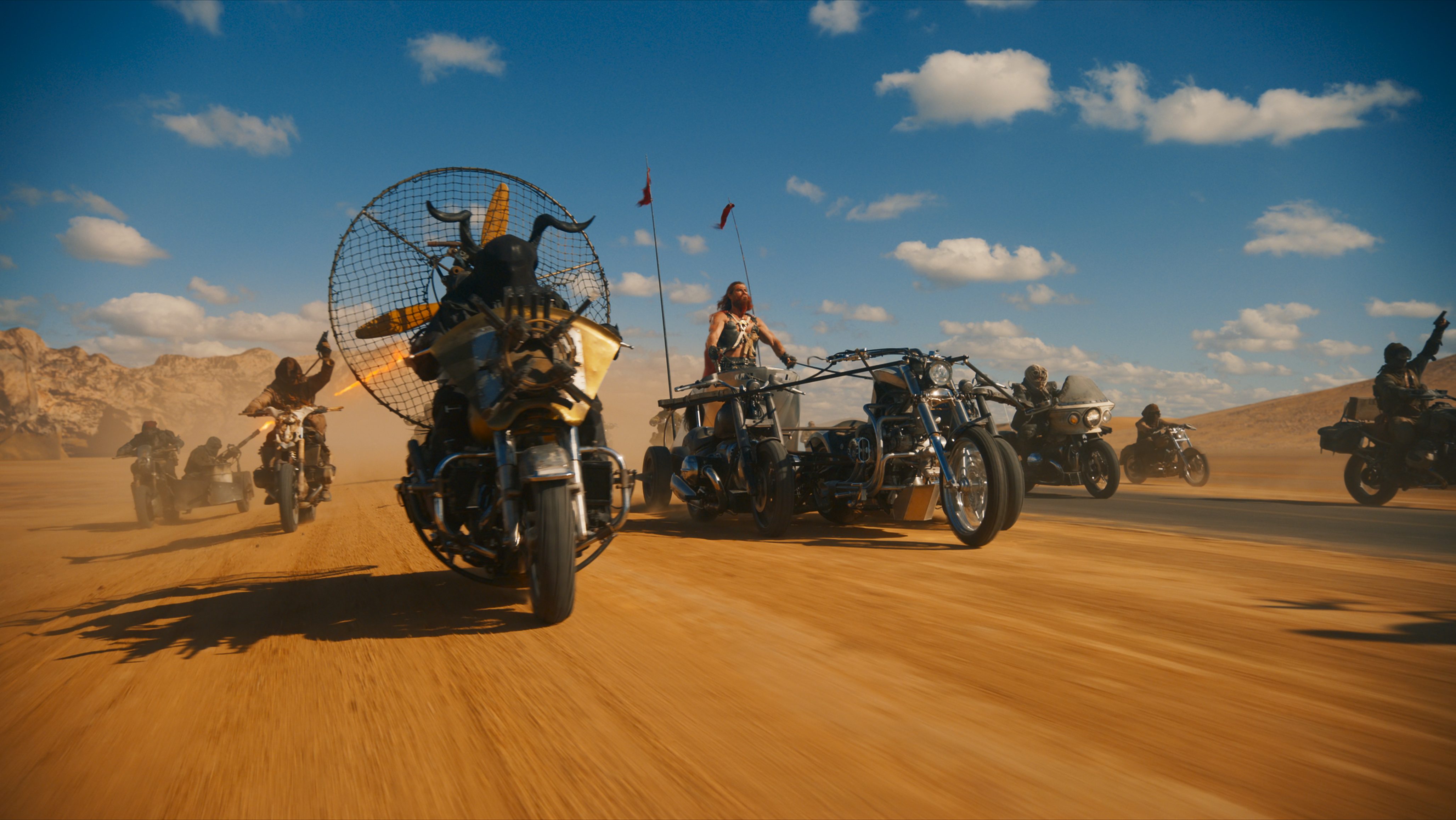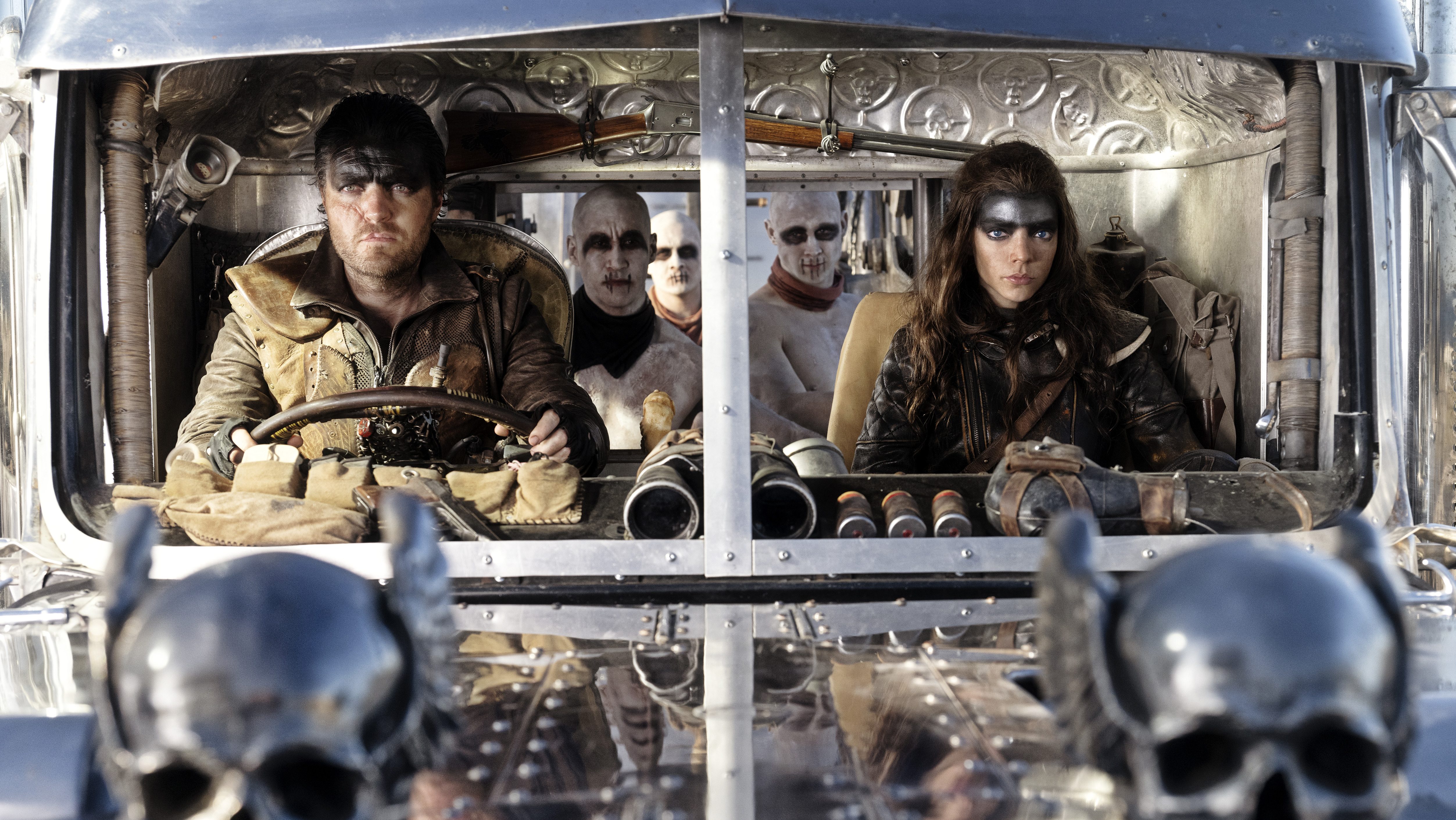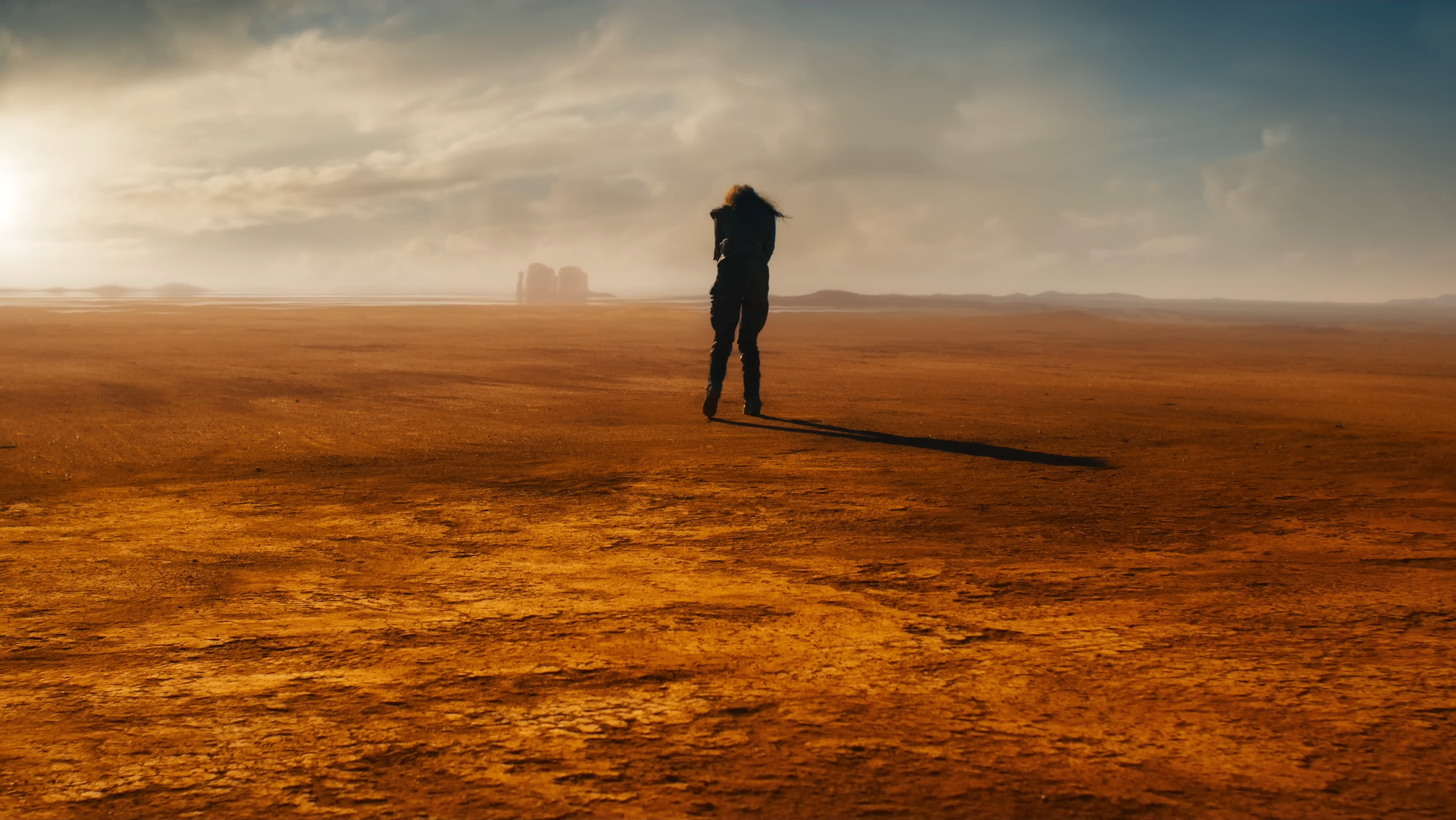Each Mad Max film feels like a reinvention. The distinct urban setting of the original 1979 film, with its burning rubber on asphalt, is nowhere to be found in its 1981 sequel, Mad Max 2, in which inner-city architecture has been supplanted by sparse open landscapes, dirt tracks, and oil refineries. Beyond Thunderdome (1985) is fashioned in the mould of the sentimentality and world-building of Spielberg and Lucas; like fellow third-parter Return of the Jedi (1983), it’s often brushed off as “just a kid’s film.” 30 years later, Fury Road (2015) was an aesthetic obliteration and abstraction, something of a pure action film that defied all expectation, fanging us down its titular highway at breakneck speed and with shocking clarity. Relegating Max (Tom Hardy) to shotgun and introducing Furiosa (Charlize Theron), the film gave us ample time to witness the latter’s story of liberation. By freeing the enslaved wives of a grotesque tyrant, she lit a fuse of change and kindled a new, uncertain future.

Furiosa: A Mad Max Saga doesn’t feel like another reinvention so much as an iteration. Though it may be a prequel, this is less a retread than a detour, and a sprawling one at that. On the surface, it is truly a version of Mad Max for the 2020s, with all the alarm bells such a statement might set off. Boasting a red-hot runtime just shy of 150 minutes, nearly twice the length of the series’ genesis, the film comes adorned with the kind of unceremoniously commercial title previously limited to Star Wars stories and Fast & Furious presentations. Tracking back through Fury Road’s rarefied air, one has cause to question: can lightning strike twice?
Don’t get it twisted: director George Miller proves capable of fashioning a new model for a familiar make. In contrast to Fury Road’s manic long weekend, Furiosa is divided into five chapters, which chart across nearly two decades. In the beginning, Furiosa (emphatically performed in her youth by Alyla Browne) is snatched from her home, the Green Place of Many Mothers—a kind of verdant, matriarchal utopia hidden within an otherwise barren orange vista—by wandering acolytes of the Biker Horde. Kidnapped and forced to bear witness to the cruel death of her mother, Mary Jo (Charlee Fraser), at the hands of Biker Horde leader Dementus (Chris Hemsworth), Furiosa’s childhood is spent bound and caged by the warlord’s side.

Later, Furiosa is traded for supplies at the Citadel to Fury Road antagonist Immortan Joe (Lachy Hulme, deep in the shadow of Hugh Keays-Byrne), yet escapes the patriarchal mitts of he and his entourage. Shaving her head and eliding her gender, Furiosa disguises herself for years as a prospective War Boy—a soldier and servant of Immortan Joe’s army—and charts the path back to the Green Place via star patterns etched on her arm.
It’s here where Anya Taylor-Joy steps in, enacting Furiosa’s rebellion proper with a central set-piece in which she attempts to smuggle herself out of the Citadel, Cape Fear-style, under the carriage of a War Rig donned by Max stand-in Praetorian Jack (Tom Burke). This results in an episode that ranks among the franchise’s most outstanding. The War Rig is attacked—as War Rigs in the Wasteland are wont to be—and Miller continues to find new ways of framing ever-mobile action as it rotates, below and above a moving tanker truck. The sequence is choreographed so cleanly and edited so tightly that it feels like a flex atop the high bar set by its predecessor. The ringing in your ears afterwards, as the film moves to silence, will pulse with a familiar pleasure.

If one will excuse the video game analogy, Furiosa feels like the Final Fantasy VII Rebirth (2024) to Fury Road’s Final Fantasy VII Remake (2020). Both are multi-title projects similarly engaged in an act of recycling and reinterpreting beloved texts. Like Furiosa to Fury Road, Rebirth diverts from Remake’s streamlined linearity, offering an open world with a bigger map host to new locations, a larger cast of characters and enemy types. Gas Town and Bullet Farm, places only mentioned or glanced at as ornamental to the vistas of Fury Road, are realised as whole, explorable environments. Furiosa’s War Rig, in the exceptional set piece noted above, is pursued by parachuting enemies that require new mechanics of dispersal. (Games are likely not far from Miller’s moodboard—in recent years, he has buddied up with video game auteur Hideo Kojima, even lending his image to the upcoming Death Stranding 2: On the Beach [2025].)

It therefore comes as little surprise that Miller and co-writer Nico Lathouris had already plotted Furiosa’s life story prior to its ostensible conclusion in Fury Road. The two films feel very of a piece, such that it may be hard to see how Furiosa could be viewed in isolation from Fury Road, and the film’s status as an appendage amplifies both its strengths and weaknesses.
Fury Road’s great asset was the economy of its storytelling, its ability to gesture to the larger contexts of its post-apocalyptic world while barrelling blindly down the freeway. Whilst an origin story, Furiosa nonetheless foregoes the traps that might otherwise render the form so generic. As in Fury Road, there is no ‘before’ but a constant now, a perpetual forward motion, even when taking the scenic route. The film’s all-encompassing desire for revenge is an echo of the franchise’s big bang. While the path Furiosa walks is well-worn and her destination—a grand, final confrontation with Dementus—is inevitable, her unpredictable turns contribute to an affecting subversion of the Rockatansky legacy. As with many of Furiosa’s details, the road travelled in Fury Road is made retroactively richer.
Engineered with peerless technical precision by the hands of cinematographer Simon Duggan and editor Margaret Sixel (the latter of whom also worked on Fury Road), the punchiness of Furiosa’s camerawork and profusion of images is dialled up in contrast to its predecessor. Fury Road’s orange and blue hues are saturated and rendered anew as chrome textures, almost gold and grey. Familiar cues such as the push in and zoom combo, which locks in on the driver of any number of souped-up, war-ready vehicles, are not so much repeated as augmented, stretched to their visual extremes.


By a similar margin, some may decry Furiosa’s necessary differences. Compared to Theron and Hardy, Taylor-Joy and Hemsworth are missing a bit of tread. They are exciting physical performers that lack the drama necessary to deliver much of the film’s dialogue with any panache. This would be excusable if the film didn’t trade wheels for words in its climactic moments. In his first role as an Australian in an Australian-set and produced film (the closest he’s come is in playing an Australian black ops bloke in the otherwise international Extraction films), Hemsworth goes big, as if making up for lost time. But one wonders if he has spent too much time in proximity to Taika Waititi in the Marvel Cinematic Universe and misplaced his sense of humour. Armed with his native accent and a farcical prosthetic nose, his style is too knowing, too showy.

For all the fuss made about Fury Road’s practical effects, one can already foresee a bit of disappointment from those habitually averse to visible VFX. The decision to alternate final credits title splashes with clips from Fury Road makes clear their textural differences, however slight. In reality, that film is a wonderous synthesis of practical stunts and CGI enhancements—how much of that balance is sustained in Furiosa will come down to the stunt and VFX reels that will inevitably emerge in its wake. In the meantime, there is much to enjoy in the film’s slick and glossy varnish.
Furiosa: A Mad Max Saga is now showing across Australia.
**********
Samuel Harris is a screen critic, early career academic, and final year PhD candidate researching the synthetic long take in action cinema and video games.


